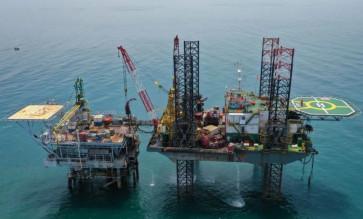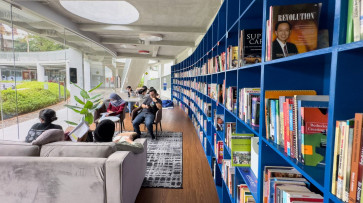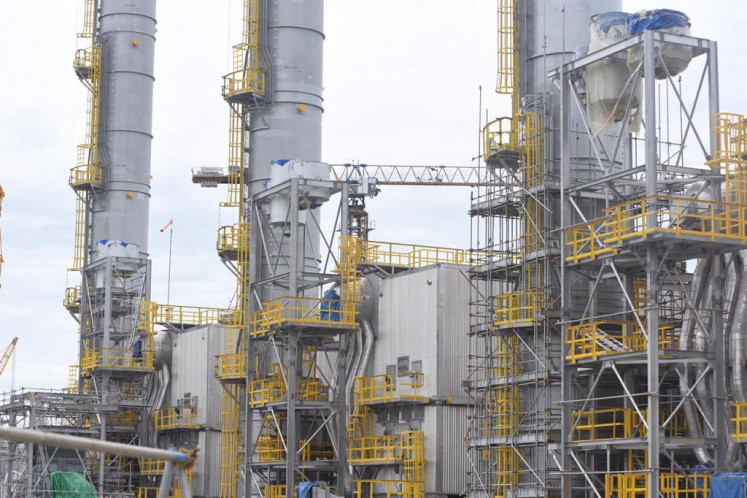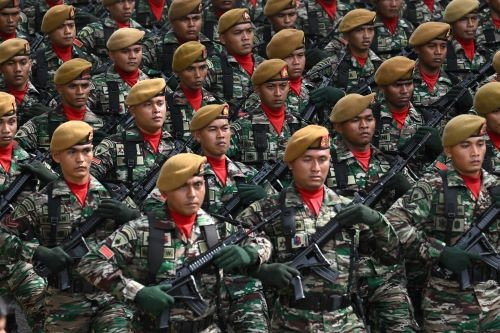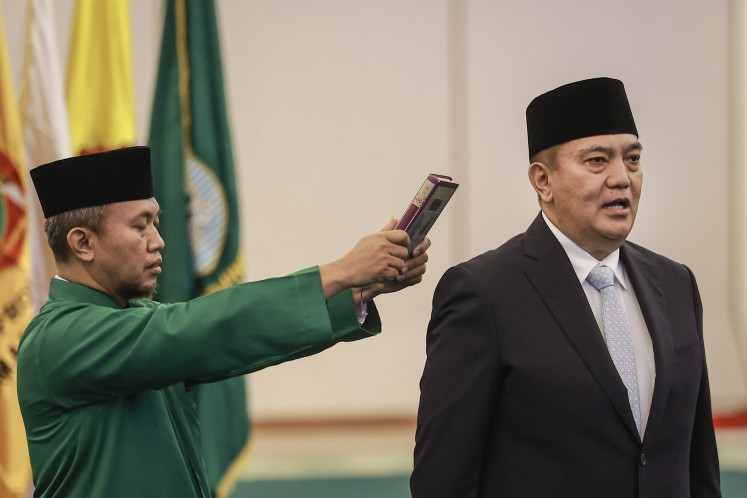What’s behind RI’s choice of F-15, Rafale and its implications
Indonesia’s shift to consider F-15EX and/or Dassault Rafale as potential candidates for its airpower modernization program indicates Jakarta’s pragmatic approach to defense modernization.
Change text size
Gift Premium Articles
to Anyone
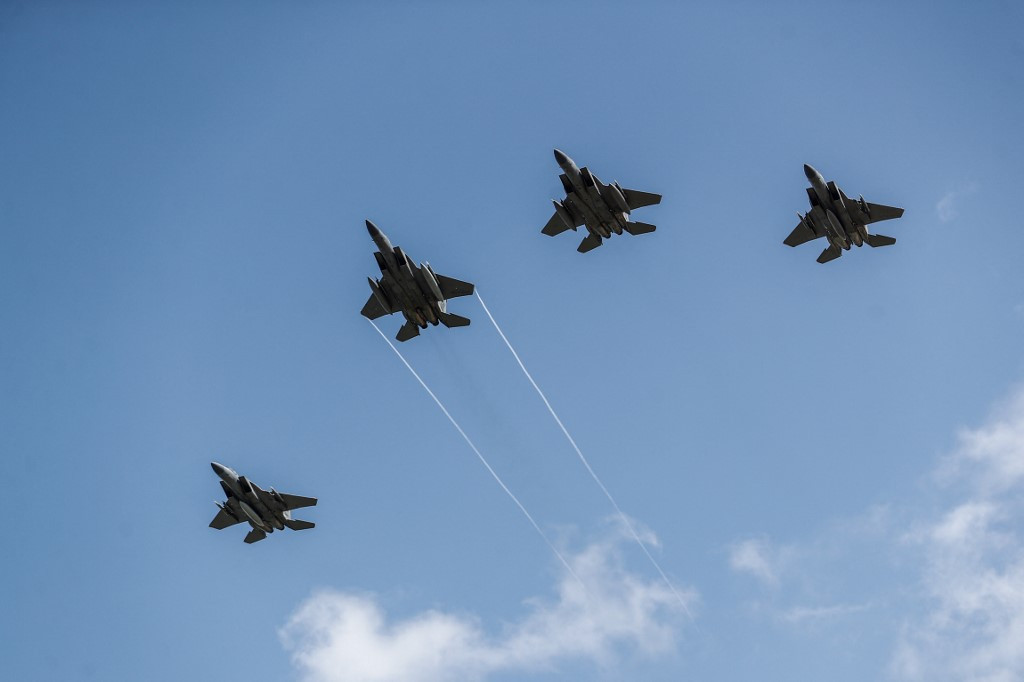
A
ir Force Chief of Staff Air Chief Marshal Fadjar Prasetyo recently announced Indonesia’s decision to drop Su-35 fighters from consideration in favor of the Dassault Rafale and/or Boeing F-15EX as suitable candidates to replace the Air Force’s retired F-5 jet fighters.
Indonesia and Russia reportedly inked a contract to purchase 11 Su-35 fighters worth US$ 1.1 billion in 2018. However, several issues hindered contract implementation, subsequently delaying the procurement and slowing the Air Force’s defense modernization under the Minimum Essential Force (MEF) program.
The shift has both short and long-term implications not only for Jakarta’s defense capabilities development but also regional dynamics.
Rumors about Indonesia’s withdrawal from the Sukhoi jet deal had been swirling for several years, with the status of the contract in limbo. It is an open secret that the Defense Ministry had pressed the brakes on the purchase because of concerns over looming United States economic sanctions through Countering America’s Adversaries Through Sanctions Act (CAATSA) if Indonesia proceeded with the contract.
Indonesian defense officials have explored different avenues to skirt the sanctions, from seeking a CAATSA waiver from Washington in return for the purchase of US fighters at an equivalent — if not higher — volume to considering other types of aircraft such as the Eurofighter as a possible alternative.
The looming threat of economic sanctions and possibly an arms embargo evokes the deeply ingrained trauma of the US arms embargo of the 1990s that crippled the Indonesian Air Force's capabilities, the long-lasting effects of which have remained. Buying the Russian fighter jets would mean dealing a big blow to Indonesia’s military readiness and possibly derail defense modernization altogether — a consequence that the country’s defense policymakers have no stomach for.
Other geopolitical factors in the form of the AUKUS trilateral security grouping, on the other hand, may also have had an impact on Jakarta’s decision to drop the Su-35 procurement plan. While not being overtly hostile toward AUKUS, Jakarta’s response is largely muted regarding Canberra’s planned development of nuclear submarine capability and its ramifications on broader regional stability.
Indonesia could take advantage of the US and its allies’ appetite to gather the wider support AUKUS needs to function as a response to China’s growing assertiveness, in return for favorable terms that benefit Jakarta’s defense modernization agendas.
Concurrently, Jakarta could also leverage Paris’ ire over Canberra canceling its Barracuda diesel-electric submarine deal to secure more favorable terms. After all, Indonesia has displayed the opportunistic streak of pitting arms suppliers against one another to gain the best deal.
Apart from geopolitical factors, Indonesian defense officials frequently cite complex financing/contractual issues to hold back the purchase. According to then-defense minister Ryamizard Ryacudu, the Sukhoi jet deal would include a counter-trade clause that allowed Indonesia to partially cover around 50 percent of the contract value with commodities rather than hard currency. Also reportedly included in the deal was a transfer-of-technology clause worth 35 percent of the contract value.
Law No. 12/2012 on the defense industry stipulates several contractual requirements, namely offset and countertrade for overseas defense procurement to support the country’s aspirations of achieving defense industry autarchy. According to Janes think tank, part of the reason why Jakarta scrapped its Su-35 deal can be attributed to the dispute surrounding the counter-trade clause.
The Indonesian Air Force (TNI-AU) currently operates several types of fighter jets, namely F-16s and Su-27/30s, as well as light attack aircraft, which include Hawk 200s and South Korean-made T-50s. Adding three squadron-sized F-15s and/or Rafales would augment the diversity, which means extra logistical load and complexity, not to mention the technical expertise for maintenance and additional manpower training needed to operate the aircraft.
The more diverse the platforms, the more complicated the systems compatibility and inter-service interoperability, a vital area of capability that the Indonesian Military (TNI) has been focusing to develop.
The choice of F-15EX and Rafale also means that the timeline of the TNI-AU's arms modernization would overshoot the projected MEF target date of 2024 and thus hamper its military capabilities development plan.
Even if contract negotiations and other technical details are agreed upon as soon as possible, current estimates suggest that delivery of the first unit would only take place as early as 2027. Considering increasing geopolitical volatility in the region, such a delay may seriously inhibit Indonesia’s ability to cope with the potential outbreak of conflict and other security challenges.
Thus, it is imperative for defense policymakers to review and recalibrate their assessment of the country’s strategic environment and future capabilities development plan.
Indonesia’s decision to forgo the Su-35 in favor of F-15s and/or Rafales reflects its pragmatic approach to defense capability development. Whichever airframe Indonesia decides on would further inch Jakarta to be increasingly intertwined with the US and/or European countries, at least from a defense and security relations standpoint.
Although theTNI-AU, like its sister services, had diversified its arms suppliers to enhance its resiliency against arms sanctions, it is largely limited to its fighter jet fleet. A significant majority of its equipment, on the other hand, was of US and European origin, if not domestically built.
From a foreign policy perspective, however, Indonesia’s shift should not be interpreted as an eagerness to jump into the foray of great power politics and take a side. Indonesia’s “free and active” foreign policy precipitates a pragmatic approach that allows it to foster close economic relations with China while at the same time maintaining cordial defense and security relations with the US.
Nor should it be viewed as an attempt to stir up an arms race and upset the military balance of the region. Rather, they should be understood in the context of Indonesia’s defense modernization and its endeavor to replace its F-5 Tiger aircraft that entered the retirement phase in 2016.
***
Keoni Marzuki and Adhi Priamarizki are, respectively, associate research fellow and visiting fellow at the Indonesia Program of the Institute of Defence and Strategic Studies (IDSS), a think tank within the S. Rajaratnam School of International Studies, Nanyang Technological University, Singapore.


